Lightroom QR codes HD 4k 100+ free Presets Download for free
In the era of ultra-high-definition displays and crystal-clear prints, having a QR code that blazes in HD 4K can make all the difference. Whether you’re promoting a new YouTube channel, sharing your portfolio link, or creating print materials, a crisp, scan-friendly QR code stands out. In this guide, I’ll walk you through everything you need to know about lightroom in HD 4K and how to download them for free on Android, iPhone, and PC. Along the way, I’ll share personal tips, common pitfalls I’ve encountered, and exactly how I get those razor-sharp Lightroom QR codes HD 4k presets. or if you are a Snapseed user you can get all the Latest Snapseed QR codes to make your Photos look professional
What are Lightroom QR codes HD 4K?
Lightroom QR codes HD 4k are simply QR code images generated or edited within Adobe Lightroom (Classic or CC) at a resolution of 3840×3840 pixels (4K). Traditionally, QR codes are typically 600×600 or 1200×1200 pixels, which is suitable for small prints or digital screens. But as soon as you blow them up for posters, trade show banners, or 4K video overlays, those standard codes start to pixelate. That’s where HD 4K QR codes come in: you export or create a code at 3840×3840 px (often at 300 DPI) so that when printed at poster size, every module (the tiny square of the QR) remains crisp.
By generating QR codes directly in Lightroom at 4K HD, you ensure that the code remains fully scannable, even if it’s stretched to a large size or layered over semi-transparent textures. Later, you’ll bring that high-res file.
Top Lightroom QR Codes HD 4K
Before sharing how I create these from scratch, here are some of the best ready-made Lightroom QR codes HD 4k presets you can download for free:
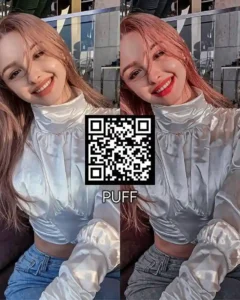
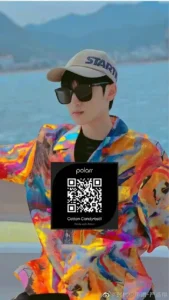

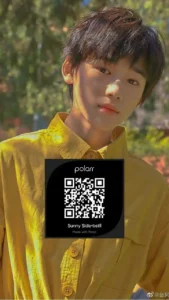


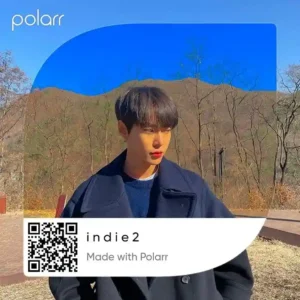
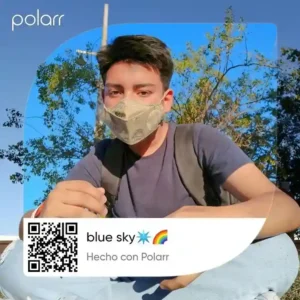
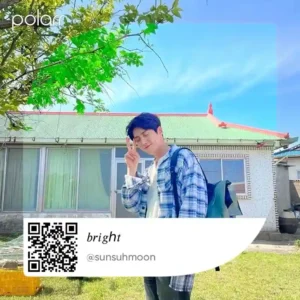
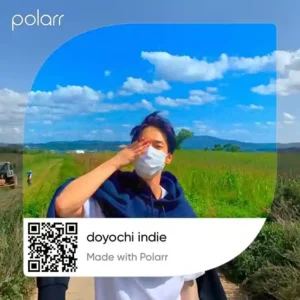
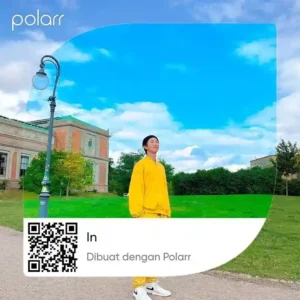
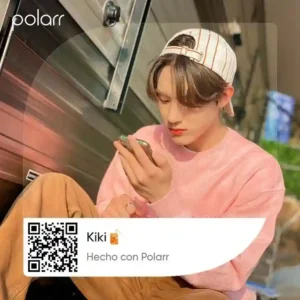
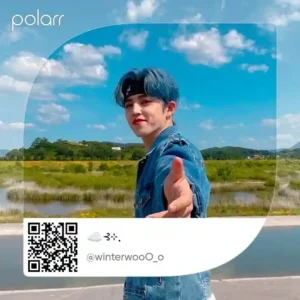
or you can also Explore the Lightroom QR codes Page where there are all kind of QR codes rather than the HD 4k Presets which you can use for your Photos and add a professional look to your images
How to Create Stunning Lightroom QR Codes HD 4k
If you’d rather build everything from scratch—and trust me, there’s something satisfying about that—here’s how I do it. I start in Lightroom to generate and prepare the code, on a phone (Android or iPhone) for final polishing and mobile-friendly export.
Install a QR Code Preset in Lightroom
- Open Lightroom Classic or CC.
- Go to File → Plug-in Manager → Add, and select your downloaded .lrplugin folder (e.g., QRMaster-4K.lrplugin).
- Restart Lightroom if needed.
- In Library, create a new Smart Preview or blank preset: go to Preferences → Presets and import the .lrtemplate if your pack includes one.
Set Up a Blank Canvas (Optional)
- If you don’t want any background image, create a new empty panorama of 3840×3840 px.
- To do this: import any small white JPEG, go to Develop → Export, choose Export as > PNG with dimensions 3840×3840, Colour Space: sRGB, Resolution: 300 DPI. This becomes your blank template
Generate the Lightroom QR Codes Hd 4k Pattern
- Select your blank template (or any image with a white background).
- In Develop, locate the installed QR code preset (e.g., “QRMaster-4K: Black on Transparent”).
- Apply the preset: a dialogue pops up prompting you to enter the URL or text you want to encode.
- Set Error Correction to “H” (highest) so you can embed logos later without losing scan reliability.
Export from Lightroom to HD 4K
- With the code applied, go to File → Export.
- Choose PNG (or TIFF if you want maximum fidelity, but PNG is smaller).
- Under Image Sizing, set Width and Height both to 3840 px.
- Resolution: 300 DPI.
- Colour Space: sRGB (ensures maximum compatibility).
- Click “Export,” and save the file somewhere easy to find (e.g., a “QR_Codes_4K” folder).
- H3 Verify Scanability
Before you share or print, always test on 3-4 devices: at minimum, a mid-range Android, an iPhone (preferably with a wide-angle camera), and—if possible—a tablet or another large monitor.
Open your phone’s camera app (or a QR scanner app like “QR Scanner Plus”). Hold your device about 6 inches from the code and ensure it decodes instantly. If it flickers or fails, recheck your quiet zone (the white border should be at least four modules wide) and ensure your contrast levels are set correctly.
That’s it. In under ten minutes, you’ve gone from a blank Lightroom canvas to a polished, HD 4K QR code ready for any platform.
must check out the Snapseed QR codes HD 4k where you can get the latest and best HD QR codes which you can use for your images to add extra look to your images
Image Quality Increases to HD 4K
The leap from a 600×600 or 1200×1200 QR code to a full 3840×3840 (HD 4K) version isn’t just about pixel count—it’s about ensuring that every module boundary stays sharply defined. In my experience, here’s why you’ll notice a big difference:
- Print Clarity:
When you take a 4K QR code to a print shop, they’ll often enlarge it to poster size (18×24″ or even 24×36″). If you only give them a 1200×1200 source, nothing scales cleanly. But drop in a 3840×3840 file, and the printers can stretch it with no interpolation artefacts—no jagged edges, no fuzzy squares. - Digital Displays: On a 4K monitor or OLED TV, low-resolution codes appear to be draped in a soft blur filter. HD 4K codes, on the other hand, sit alongside 4K video content without anyone noticing that the code is separate from the footage. They blend seamlessly.
- Module Integrity: Each black square (called a “module”) has to be perfectly square and evenly spaced. At 4K resolution, each module can be larger in pixels (often 48×48 px or more), which means camera autofocus systems (especially in low light) have an easier time focusing and reading.
If you skip the HD Step, your QR code might still “work” for phone-to-phone scanning, but as soon as real-world variables (glare, slight tilt, low battery, camera autofocus) come into play, it fails almost instantly. In short, moving to HD 4K is the difference between “it sort of works” and “it always works.
Lightroom QR codes HD 4k for PC
Suppose you work primarily on a PC (Windows or macOS). In that case, the process is more straightforward, since Lightroom Classic or CC grants direct control over canvas creation, plugin installation, and export parameters. Here’s a condensed desktop workflow:
Install Plugin or DNG Preset Pack
- Download your chosen 4K QR preset pack (e.g., QRMaster-4K or Print-Ready QR).
- For.. .lrplugin files: open Lightroom Classic → File → Plug-in Manager → Add → select the plugin folder.
- For .xmp / .dng presets: go to Edit → Preferences → Presets → Show Lightroom Presets Folder. Inside Settings, drop the .xmp files. For DNG presets, import them via File → Import Photos and Video.
Create a 4K Blank Canvas
- Right-click any white JPEG, open it in Photoshop (if available), and use Image → Canvas Size to set 3840×3840 px. Save as PNG at 300 DPI.
- Alternatively, in Lightroom, import a small white JPEG, then Export with Image Sizing → Width: 3840 px, Height: 3840 px, Resolution: 300 DPI, and Colour Space: sRGB. This becomes your blank code template.
Apply Preset and Generate
- Select the blank canvas in Library or Develop.
- Open the Presets panel in Develop and select your 4K QR preset. Enter the URL or text.
- Make sure Error Correction is set to H or Q (for logos).
- If you need a coloured version (e.g., dark blue modules on transparent backgrounds), adjust the preset’s colour wheel or locale settings.
Apply Preset and Generate
- Click File → Export.
- Under Export Location, choose a dedicated folder (e.g., C:\Users\You\Pictures\QR_4K\).
- File Settings:
- Format: PNG
- Colour Space: sRGB
- Quality: 100%
- Format: PNG
- Image Sizing:
- Width: 3840 px, Height: 3840 px
- Resolution: 300 pixels/inch
- Output Sharpening: Off
- Width: 3840 px, Height: 3840 px
- Hit Export
Optional Touch-Ups in Photoshop or GIMP
- If you want rounded corners on each module or to embed a small logo in the center, open the exported PNG in Photoshop or GIMP.
- Use Select → Colour Range → Select White to isolate the background; delete it (transparent background remains).
- Insert your logo PNG in a new layer, scale to no more than 20% of the QR’s width, centre it, and save as a new PNG or SVG.
Batch Generation (Pro Tip)
- If you have 50+ URLs to encode, create a CSV file with two columns: Filename, URL.
- Use a free Lightroom plugin called “Export to DNG” or write a small Python script (if you’re comfortable) that loops through each URL, applies the preset, and exports automatically.
- I did this once for an event: within 10 minutes, I had 100 unique HD 4K codes, each named after a speaker profile.
By using Lightroom (Classic or CC) on a PC, you gain direct canvas control, plugin flexibility, and faster export times—critical if you frequently need to generate dozens of high-res images.
Benefits of Using Lightroom QR Codes HD 4k for Beginners and Pros
For Beginners:
- Simplicity & Guided Presets
- You don’t need advanced design skills. Once you install a 4K QR preset, generating a code is as simple as applying it to a white canvas and typing your URL.
- Lightroom’s intuitive sliders and preset panels guide you through contrast, colour, or space, and dimensions, so you rarely have to guess settings.
- You don’t need advanced design skills. Once you install a 4K QR preset, generating a code is as simple as applying it to a white canvas and typing your URL.
- Zero-Cost Tools
- Adobe Lightroom Mobile’s free tier allows basic preset usage without a paid subscription. Many QR preset creators distribute their packs at no cost.
- Snapseed—also free—lets you refine contrast, add logos, or overlay text, all on your phone.
- Adobe Lightroom Mobile’s free tier allows basic preset usage without a paid subscription. Many QR preset creators distribute their packs at no cost.
- Learning Curve That Scales
- As you become more comfortable, you can move from mobile to desktop workflows, experiment with colour-coded QR modules, or build custom Lightroom presets that match your brand.
- You’ll pick up broader Lightroom skills—like understanding colour profiles (sRGB vs Adobe RGB), export pipelines, and DPI concepts—while you learn to make QR codes.
- As you become more comfortable, you can move from mobile to desktop workflows, experiment with colour-coded QR modules, or build custom Lightroom presets that match your brand.
For Professionals:
- Batch Processing & Automation
- You don’t need advanced design skills. Once you install a 4K QR preset, generating a code is as simple as applying it to a white canvas and typing your URL.
- You don’t need advanced design skills. Once you install a 4K QR preset, generating a code is as simple as applying it to a white canvas and typing your URL.
- Consistent Branding & Advanced Customisation on
- HD 4K QR codes enable you to embed transparent logos, rounded modules, or gradient borders without compromising scan reliability.
- You can fine-tune colour profiles for print (e.g., switch between sRGB and Adobe RGB) so that your branding colours remain true on high-end presses.
- HD 4K QR codes enable you to embed transparent logos, rounded modules, or gradient borders without compromising scan reliability.
- High-Volume Print & Digital Integration
- Agencies often need to output QR codes for billboards, large magazine spreads, or 4K video advertisements. A standard 1200×1200 code simply won’t cut it in those contexts.
- Professionals can ensure a single “master” 4K QR asset can be repurposed across brochures, websites, and social media—saving time and guaranteeing consistent quality.
- Agencies often need to output QR codes for billboards, large magazine spreads, or 4K video advertisements. A standard 1200×1200 code simply won’t cut it in those contexts.
- Analytics & Dynamic Encoding
- Advanced workflows allow you to generate dynamic QR codes (where the URL can change on the backend) but still export high-res versions for print. I’ve used services like QR Code Generator Pro to create a dynamic link, then pulled the raw pattern into Lightroom for a custom 4K export.
- Advanced workflows allow you to generate dynamic QR codes (where the URL can change on the backend) but still export high-res versions for print. I’ve used services like QR Code Generator Pro to create a dynamic link, then pulled the raw pattern into Lightroom for a custom 4K export.
Whether you’re just dipping your toes into QR code design or running a full-scale marketing operation, HD 4K workflows empower you to produce professional-grade codes that stand up to any medium.
Overcoming Common Lightroom QR Codes HD 4k Hiccups
The following are some common issues that might appear while scanning the lightroom QR codes HD 4k.
QR won’t scan? (camera focus, contrast tips)
If the QR code doesn’t scan, ensure the QR code image is high-quality and in high definition (HD). Sometimes, blurred images may cause issues when detecting edits in the Lightroom application while scanning the QR code.
Preset looks off? (white balance, exposure fixes)
If your preset QR code and the edited version look different, ensure you have not applied any edits before and that you have selected the same type of image as the QR code.
App crashing on import?
If the app crashes while importing the QR code or image, try clearing the cache from the application settings or checking if the latest update has been released for the Lightroom application.
Conclusion Lightroom QR codes HD 4k
There’s something undeniably satisfying about scanning a poster, pulling up a website instantly, and knowing that behind the scenes, you invested in a crystal-clear QR solution. Combine the power of Lightroom’s presets, so you can generate, refine, and deploy top-quality codes anywhere—Android, iPhone, or PC. If you’ve ever struggled with blurry codes, scanning failures, or pixelated prints, this workflow will save you time (and headaches) while making your designs shine.
Ready to level up your QR game? Download one of the free 4K QR preset packs, fire up Lightroom, and you’ll wonder why you ever settled for anything less than 4 K.
